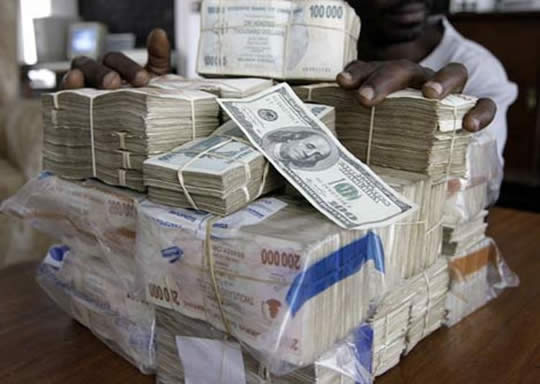Tafataona Mahoso’s ‘foolish’ wisdom

 Political Monday with Amai Jukwa
Political Monday with Amai Jukwa
I have always found Mahoso and Chivaura a ponderous and tiresome pair. Chivaura’s combative prime-time ZBC show, African Pride, is self-indulgent and largely uninspiring. One gets the feeling that he is talking to himself. Mahoso for his part writes a voluminous column for The Sunday Mail in which he batters the reader with dated talk of “Madzimbahwe” and elaborate European conspiracy theories.
I was recently made aware of a spirited exchange between Mahoso and the Herald Business editor Happiness Zengeni. Mahoso took exception to her assertion that Zimbabwe was not ready for a national currency. At first instance I was minded to agree with Zengeni but after reading through Mahoso’s extensive arguments — delivered in a series of unrelenting columns — I have not only been persuaded otherwise but have also discovered some unappreciated gems of wisdom in what I previously dismissed as the ravings of an unpersuasive propagandist.
The accepted wisdom is that Zimbabwe is suffering from a lack of confidence. The very suggestion of the return of the Zimbabwean dollar unnerves investors and arouses a sense of uncertainty. As such Government should not only forget about re-introducing the Zimbabwe dollar but should not even talk about it as the very conversation suggests unrighteous contemplation on their part.
The argument seems logical at surface but Mahoso offers an impressive rebuttal, tearing through it and proving that its façade of reasonableness is founded on nothing more than terror.
Mahoso points out that Zimbabwe had a national currency for 29 years. For 27 years that currency functioned decently well under the very same Government we have today. Why should the events of 2007 and 2008, a mere two years, be used to characterise the essence of a national currency? Surely a balanced conversation would also give weight to the 27 successful years in which “schools, clinics, training centres, dip-tanks, roads, laboratories, universities, magistrates’ courts, community centres and libraries” were built on the back of that currency.
Mahoso challenges the vague theme of terror relied upon by those who oppose the national currency. Instead of engaging in logical debate on the specific economic fundamentals necessary or the framework that should support the eventual re-introduction of the currency we are told that we should not even think or talk about it.
To get us in line we are constantly reminded of a 2008 bogeyman that is supposedly ready to pounce the moment it senses the slightest contemplation of a national currency.
Perhaps inadvertently, Mahoso touches on something more sinister. The foundation of this 2008-will-return fear-mongering is the subliminal suggestion that the Government is made up of rapacious money printing beasts that can only be restrained by the inability to print. Once these animals can print again 2008 will most certainly be repeated.
It is not in doubt that Dr Gideon Gono, the then Governor of the Reserve Bank, made expedient decisions that ultimately ruined the currency. Even the most ardent Zanu-PF supporter is now very much alert to the dangers of printing money to finance government expenditure. Instead of pointing to these errors of judgment with the sole aim of frightening people out of meaningful debate, those opposed to a national currency should be offering suggestions on the development of transparent frameworks to prevent the same thing happening again.
The resistance seems awfully visceral. I can accept an argument that says we are not ready for a national currency. However, that argument should set out definite benchmarks on when the conditions will be right. I can accept an argument that says the Reserve Bank cannot be trusted but the argument must in turn make suggestions as to how the discretion of the Reserve Bank can be limited and its operations made more transparent.
Jumping up and down and simply shouting no, no, no hardly constitutes informed debate.
Mahoso demolishes the notion that Zimbabwe should wait blindly until some undefined conditions prevail. Instead, the Government and stakeholders must actively work to set clear benchmarks as to when a new currency can be introduced, the framework upon which its value will derive and what protections will be built in to prevent a re-run of 2008.
His argument cannot be faulted. It seems grossly negligent for a sovereign nation to sheepishly rely on external currencies without making any tangible plans for its own.
Government has already intimated that the re-introduction of the Zimbabwe dollar would not be absolute; it would run alongside other currencies. This is encouraging as it suggests that Government recognises that it cannot employ brute force but must instead win the confidence of the public.
We must accept two uncomfortable truths: The Chinese are not going to help us. Chinamasa, quite irresponsibly, continues to entertain fantasies about a possible “substantial” bailout package. The second perhaps more obvious truth is that the Western world is not going to help us either. We are on our own.
It is quite a pity that Gono is a discredited figure; at this moment we could certainly use an unconventional thinker (I suspect Gono feels the same way given the rather crude attack on Chinamasa by Fingaz a few weeks back). Our policy makers are displaying a desperate lack of imagination and have, in cowardly fashion, discounted viable possibilities in appeasement to a noisy but largely ignorant media.
The problem is both Chinamasa and the Central Bank have taken the unhelpfully orthodox view that the solution to our problems can only come from an external injection of funding.
This is quite simply not true; Government has the capacity to inject billions of dollars of liquidity into the economy within a matter of months using nothing more than the resources we have in the country. There is precedence to this effect. The fact that they are not exploiting these avenues does not speak to impossibility but incompetence.
Consider Germany’s similarly desperate circumstances in 1923. Hyperinflation had wiped out the value of its currency. A loaf of bread cost 200 billion marks. Prices jumped by the hour. At the very end 4,2 trillion marks were equivalent to one American dollar. I suspect this sounds quite familiar.
Shops were empty. Marks were virtually worthless and farmers refused to supply stores with food instead opting to barter with individuals. Angry food riots broke out. Vicious urban mobs marched into the countryside, attacking farmers and digging up potatoes. It was chaos.
Germany was also considered a pariah. Onerous reparations had been imposed for its aggressions in the First World War. Given its rogue status, it was not possible to borrow externally to use foreign exchange to shore up a new more stable currency. Gold was equally not an option since the country had exhausted its reserves. It seemed as though there was nothing the government could do.
What is remarkable is that the Germans moved from a completely debased currency to a perfectly functional one in just a matter of months. Contrast this with Zimbabwe. Five years have passed since the Zimbabwe dollar collapsed.
In those five years we have failed to produce even a single white paper on a possible framework to support the reintroduction of a national currency. Not only so, our officials actually boast that we should feel secure in the knowledge that we will not have a national currency for at least another five years as though a national currency were a menace. It’s pathetic.
It is helpful to note that Germany’s currency stabilisation had absolutely nothing to do with the vague “economic fundamentals” our pseudo-experts are fond of referring to. It was simply a matter of innovation.
The German government recognised that any new currency would have to be backed by something if it was to win public confidence. It managed to circumvent the lack of foreign exchange and an absence of gold reserves by mortgaging land and industrial plants and used this to back a new currency, the Rentenmark. Hyperinflation came to an immediate stop.
The crucial point is not so much the specific methods employed by the Germans but the display of possibility. The French at one time also backed a currency, the assignat, using land seized from the church.
Initially the land could only be sold to holders of the assignat and the currency proved effective. However, the government ended up printing too many leading to hyperinflation.
The point here is that we are not without options. One possibility would be to mark out vast residential and industrial stands and only allow their purchase in the local currency. This could possibly include placing a value on resettled land as well and allowing transfer of title only in the local currency.
We recently read of a Manicaland farmer who was using merely one hectare of a 490-hectare farm.
Such land could be seized and mortgaged with payments made in the local currency. The demand for land and governments monopoly over it would make such a currency highly sought after and locally tradeable with international currencies.
It is tempting to dismiss Tafataona Mahoso as a crank but his lone arguments on the national currency are the stuff of wisdom. We ignore him at our peril.
Ndatenda, ndini muchembere wenyu Amai Jukwa









Comments